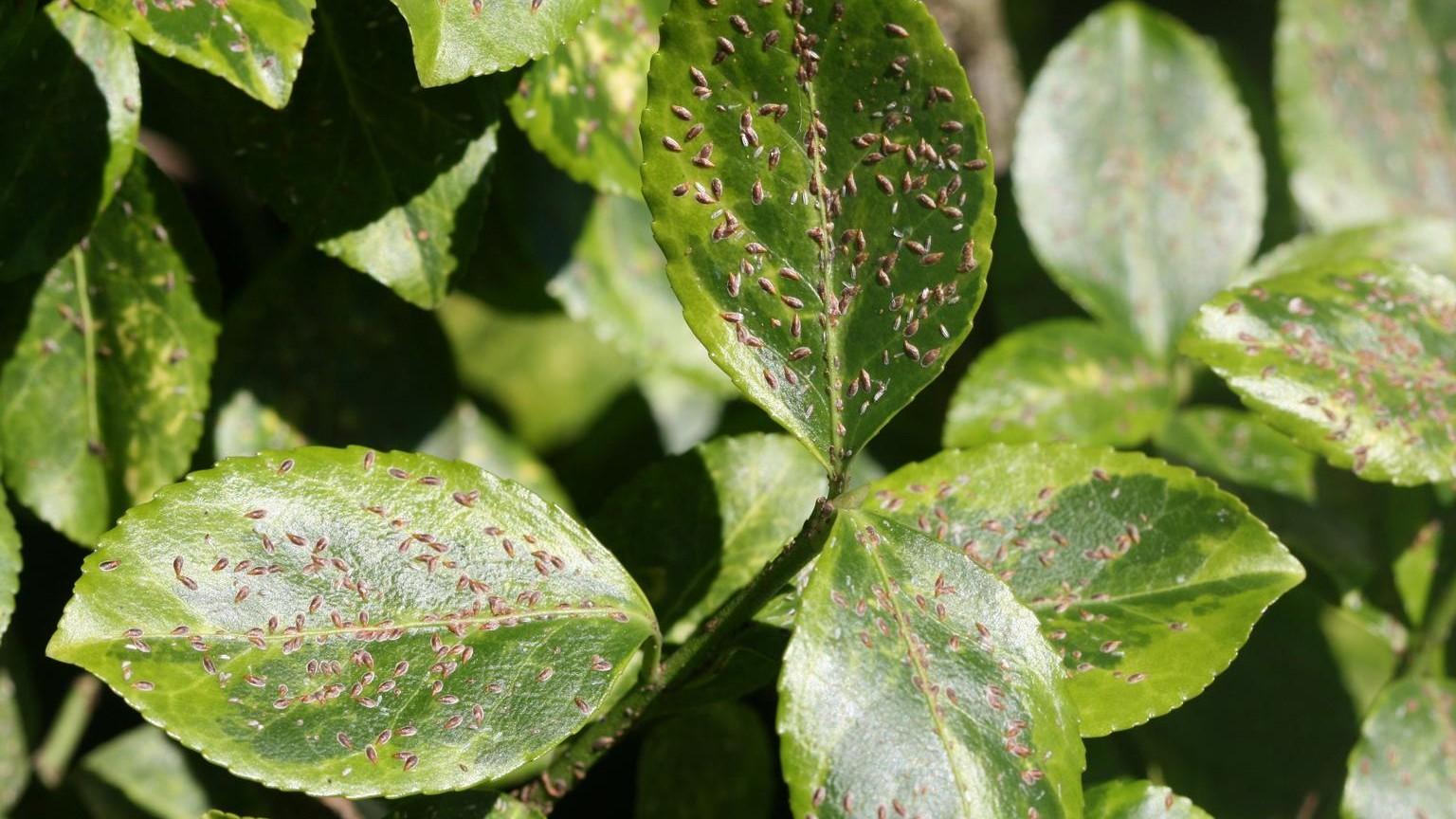Plant damage
- Moderate infestations may result in stagnated growth or stunting and leaves will develop yellow spots.
- Heavy or prolonged infestations can result in the death of branches or entire plants.
Life cycle
- There are 2 overlapping generations per year in Maryland.
- Crawler emergence periods depend on temperature and can vary slightly from year to year. The approximate times to monitor for them are:
- First-generation – late April through early June
- Second generation – early August through September
- They overwinter on the bark as mated females.
Management
Refer to our general scale management recommendations for both chemical-based and pesticide-free options. When pesticides are warranted, a combination of dormant oil applications and the use of systemic or growth-regulating insecticides is the most effective approach. For large populations, scale suppression may require more than one year of intervention, and professional pesticide applicators will be needed to apply certain treatments.
The overlapping generations mean that monitoring and treatment will need to occur several times a year to be effective. If you do not wish to use pesticides and are not obtaining good control from manual removal efforts alone, remove and replace the infested plants. Plant removal is strongly recommended when the infested plant is an invasive species.
When not too weakened, Euonymus regenerates well from harsh pruning. Cut back heavily-infested plants almost to the ground so regrowth will be easier to monitor; this also greatly reduces pesticide use since there will be fewer plant surfaces to spray.
Pesticide sprays should be avoided when red-spotted black lady beetles are present, as they are a scale predator.
Timing details for monitoring and pesticide use
Begin monitoring for crawlers right before the expected emergence period for each generation. Since weather trends can shift date ranges, a more reliable prediction of timing can be made using Growing Degree Days and Plant Phenological Indicators. Below are refined estimates of egg hatch and the beginning of crawler emergence:
- First-generation – 522 degree days
- After the peak flowering of tulip poplar (Liriodendron tulipifera) and green hawthorn (Crataegus viridis ‘Winter King’)
- Before the peak flowering of American smoketree (Cotinus obovatus)
- Second generation – 2235 degree days
During the peak flowering of Japanese Pagodatree (Styphnolobium japonicum; invasive)
Before the first flowering of Natchez Crapemyrtle (Lagerstroemia ‘Natchez’)









